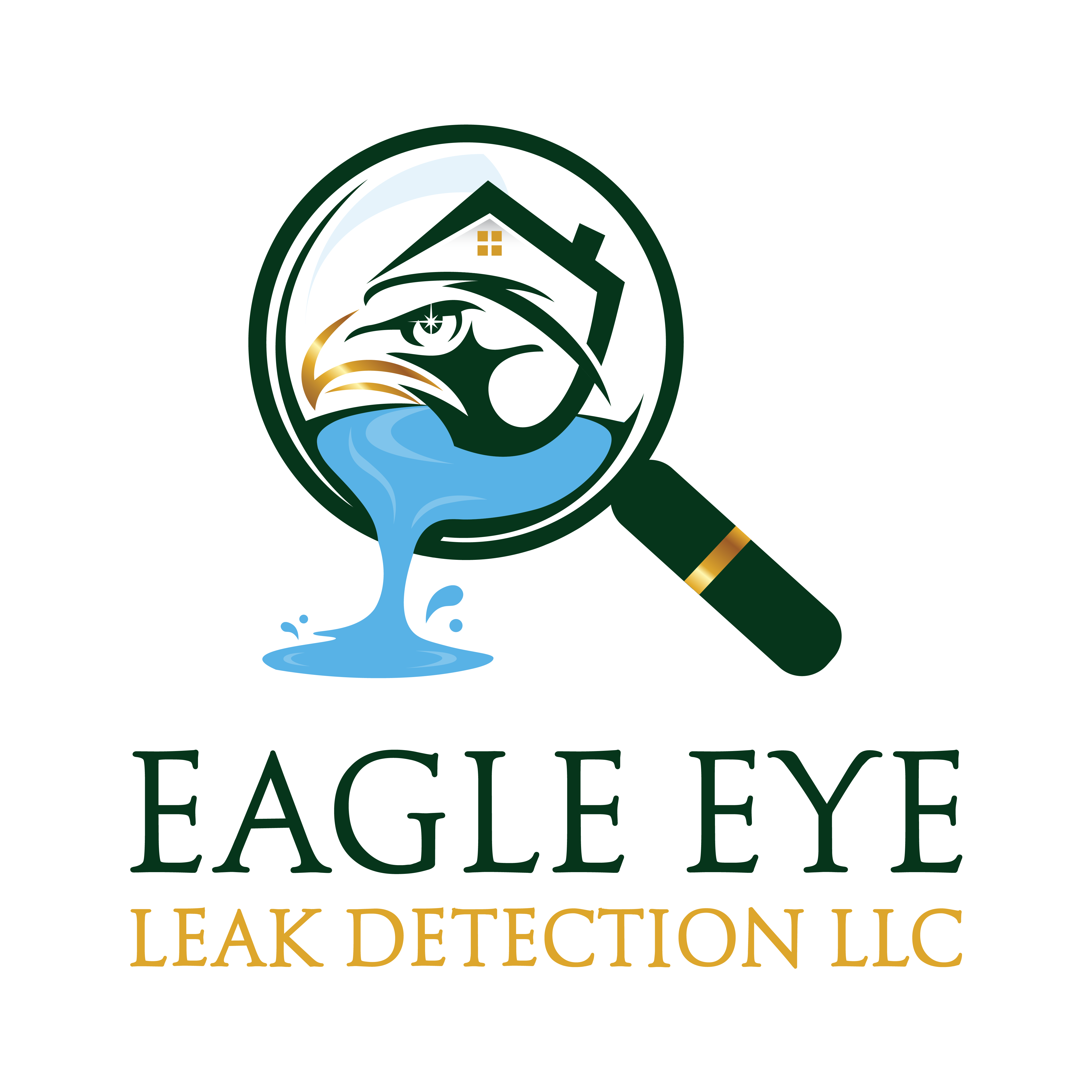Osmason Leak: The Silent Threat You Can't Afford To Ignore
In the intricate dance of home maintenance and structural integrity, certain threats lurk beneath the surface, unseen and often unheard, until their damage becomes undeniable. Among these insidious issues, we encounter what we might term an "osmason leak." While not a universally recognized scientific term, the concept of an osmason leak refers to a particularly challenging category of water ingress: those subtle, slow, and often hidden leaks that gradually erode the structural integrity and health of a property. These aren't the dramatic bursts or obvious puddles, but rather a persistent, almost osmotic, seepage that can go unnoticed for months, even years, leading to extensive and costly damage.
Understanding and identifying an osmason leak is paramount for any homeowner or property manager. Its deceptive nature means that by the time visible signs appear, the problem has likely escalated beyond a simple fix. This article delves deep into the world of these hidden water threats, exploring their characteristics, the devastating impact they can have, advanced detection methods, and crucially, how to prevent and effectively repair them. Our aim is to equip you with the knowledge to protect your investment, your health, and your peace of mind from this silent, yet formidable, adversary.
What Exactly is an Osmason Leak? Unraveling the Mystery
The term "osmason leak" is not found in standard engineering or plumbing textbooks, yet it serves as a powerful descriptor for a very real and dangerous phenomenon. Imagine a leak that doesn't announce itself with a gush but rather seeps in, molecule by molecule, much like osmosis. Combine this with the robust, often hidden, nature of structural elements (like masonry or framing), and you get the essence of an osmason leak: a slow, pervasive water intrusion that targets the very fabric of your building, often in concealed spaces.
- Tweet Archive
- Kenny Chesney Renee Zellweger
- Richard Quest
- Tim Curry As Rooster
- What Is The Zodiac Sign For November 12
These leaks are characterized by their stealth. They occur in places that are difficult to access or visually inspect, such as inside wall cavities, beneath floorboards, behind tiling, or within the foundation. Unlike a burst pipe that demands immediate attention, an osmason leak can go unnoticed for extended periods, allowing moisture to accumulate, materials to degrade, and secondary issues like mold growth to proliferate. The damage compounds over time, turning what might have been a minor repair into a major, expensive remediation project. It's the kind of leak that whispers rather than shouts, but its whispers can be devastating.
The Insidious Nature: Why Osmason Leaks Go Undetected
The primary reason an osmason leak poses such a threat is its ability to remain hidden. Its subtlety is its greatest weapon, allowing it to inflict damage without immediate detection. Understanding why these leaks are so elusive is the first step in combating them.
Common Hiding Spots
Osmason leaks thrive in concealed environments. These include:
- Inside Wall Cavities: Water can seep through tiny cracks in exterior walls, faulty flashing around windows or doors, or even from plumbing lines within the walls. Once inside, it drips down silently, absorbed by insulation and drywall.
- Beneath Floorboards and Subflooring: Leaks from upstairs bathrooms, kitchens, or even a faulty refrigerator line can slowly penetrate flooring, saturating subflooring and joists below.
- Within Ceilings: Roof leaks, overflowing gutters, or issues with an upstairs bathroom can cause water to pool in ceiling spaces, often only becoming visible when a stain or sag appears.
- Foundations and Basements: Cracks in the foundation, hydrostatic pressure, or improper drainage can lead to slow, persistent seepage into basements or crawl spaces, often hidden behind finished walls or stored items.
- Around Pipes and Fixtures: Even a tiny pinhole leak in a pipe, a loose connection under a sink, or a failing seal around a shower can lead to an osmason leak that goes unnoticed until significant damage occurs.
Subtle Indicators You Might Miss
Because they are hidden, osmason leaks rarely present with obvious puddles. Instead, they offer subtle clues:
- Musty or Earthy Odors: This is often the first, and most significant, indicator of hidden moisture and mold growth. If you smell dampness without an obvious source, investigate immediately.
- Faint Stains or Discoloration: Yellowish, brownish, or dark stains on walls, ceilings, or floors that seem to appear and slowly grow. These might be mistaken for dirt or old marks.
- Warping, Bubbling, or Peeling: Paint that bubbles, wallpaper that peels, or wood that warps or swells can all point to moisture saturation behind the surface.
- Unexpectedly High Water Bills: A sudden or gradual increase in your water bill without a change in usage can be a strong sign of a hidden leak in your plumbing system.
- Deterioration of Materials: Soft spots on drywall, crumbling plaster, or deteriorating grout can indicate prolonged exposure to moisture.
The Illusion of Minor Issues
Often, the early signs of an osmason leak are dismissed as something less serious. A small stain might be attributed to a spill, a musty smell to poor ventilation, or a warped floorboard to humidity. This tendency to downplay or misinterpret the initial warnings allows the osmason leak to continue its destructive work unchecked. Homeowners might not realize the severity until structural damage is visible, or health issues from mold become apparent.
The Devastating Impact: More Than Just Water Damage
The consequences of an unaddressed osmason leak extend far beyond simple water stains. Its long-term effects can compromise the very safety, value, and habitability of your property, leading to significant financial burdens and potential health risks.
- Structural Integrity Compromise: Prolonged moisture exposure can weaken wooden beams, joists, and studs, leading to wood rot. It can also corrode metal components and compromise the integrity of drywall and plaster. In severe cases, it can affect the foundation, leading to cracks and instability, which are incredibly costly to repair.
- Health Risks: One of the most dangerous byproducts of an osmason leak is mold and mildew growth. Mold thrives in damp, dark environments and can begin to grow within 24-48 hours of water exposure. Mold spores can trigger allergies, asthma attacks, respiratory problems, and other health issues, particularly in sensitive individuals. Poor indoor air quality becomes a significant concern.
- Financial Drain: The costs associated with an osmason leak can quickly spiral. This includes:
- Repairing the Leak Source: Locating and fixing the actual leak.
- Remediation of Water Damage: Replacing damaged drywall, flooring, insulation, and structural elements.
- Mold Remediation: Professional mold removal can be very expensive, especially if the contamination is widespread.
- Increased Utility Bills: A hidden leak in your plumbing system can lead to continuously higher water bills.
- Property Devaluation: A history of unresolved water damage or mold can significantly reduce your property's market value.
- Impact on Personal Well-being: Dealing with a major leak and its aftermath is incredibly stressful. It can disrupt daily life, force temporary relocation, and cause significant emotional distress, adding to the overall burden.
Identifying the Unseen: Advanced Detection Techniques for Osmason Leaks
Given the hidden nature of an osmason leak, traditional visual inspections are often insufficient. Modern technology and specialized expertise are crucial for accurate and non-invasive detection.
- Thermal Imaging Cameras: These cameras detect temperature differences. Evaporating water causes a cooling effect, which thermal cameras can pick up, revealing hidden moisture pockets behind walls or under floors. This is a powerful tool for pinpointing an osmason leak without tearing into structures.
- Acoustic Leak Detectors: Water flowing or dripping through a small opening creates a distinct sound. Acoustic detectors amplify these sounds, allowing technicians to listen for the precise location of a leak, even deep within walls or underground pipes.
- Moisture Meters: These handheld devices measure the moisture content in various building materials. By testing different areas, professionals can map out the extent of water intrusion and track it back to its source, even if the surface appears dry.
- Pressure Testing: For plumbing systems, pressure testing involves isolating sections of pipes and monitoring pressure drops. A consistent drop indicates a leak within that section, guiding the technician to the general area of the osmason leak.
- Dye Testing: In cases where the source is suspected to be from an exterior crack or a specific drain, non-toxic dyes can be introduced into the water flow. If the dye appears inside the property, it confirms the leak path.
The key to successful detection of an osmason leak lies in the combination of these tools with the experience of a professional leak detection specialist. Their training allows them to interpret subtle data and pinpoint the exact source, minimizing exploratory damage.
Prevention is Key: Safeguarding Your Property from Osmason Leaks
While complete prevention of all leaks is impossible, proactive measures can significantly reduce the risk of an osmason leak developing and causing extensive damage.
- Regular Inspections: Periodically inspect your plumbing, roofing, foundation, and exterior walls. Look for signs of wear, cracks, or loose components. Pay attention to areas prone to water exposure like bathrooms, kitchens, and basements. Consider professional annual inspections.
- Proper Maintenance:
- Sealing and Caulking: Regularly check and re-caulk around windows, doors, bathtubs, showers, and sinks. Ensure exterior sealants are intact.
- Gutter Cleaning: Keep gutters and downspouts clear of debris to ensure proper water diversion away from your foundation. Clogged gutters can lead to water overflowing and seeping into walls or foundations.
- Roof Maintenance: Inspect your roof for missing or damaged shingles, flashing issues, or deteriorated sealants. Address any issues promptly.
- Appliance Hoses: Check hoses for washing machines, dishwashers, and refrigerators regularly for cracks or leaks. Consider replacing old rubber hoses with braided stainless steel ones.
- Address Minor Issues Promptly: Don't ignore small drips, minor stains, or musty smells. These are often early warnings of a developing osmason leak. A quick fix now can save thousands later.
- Understand Your Property's Vulnerabilities: Every home has unique characteristics. Older homes might have aging pipes, while homes in certain climates might be more susceptible to foundation issues or ice dams. Be aware of your property's specific weak points.
- Ensure Proper Drainage: Make sure the ground around your foundation slopes away from the house, directing rainwater away. Consider French drains or other solutions if you have persistent standing water.
The Repair Process: Tackling an Osmason Leak Effectively
Once an osmason leak has been identified, the repair process is multi-faceted, requiring careful planning and execution to ensure both the source and the resulting damage are addressed comprehensively.
- Precise Location: The first and most critical step is pinpointing the exact source of the leak. As discussed, this often requires specialized equipment and expertise to minimize invasive demolition.
- Damage Assessment: Before any repairs begin, a thorough assessment of the damage is necessary. This includes identifying all affected materials (drywall, insulation, wood, flooring), checking for mold growth, and assessing the extent of structural compromise.
- Repairing the Source: This is the core of the fix. It could involve repairing or replacing a faulty pipe, sealing a foundation crack, re-flashing a window, or fixing a roof issue. The repair must be durable and prevent future recurrence of the osmason leak.
- Drying and Dehumidification: After the leak source is fixed, the affected area must be thoroughly dried. This often involves industrial-strength fans and dehumidifiers to remove all residual moisture from porous materials, preventing mold growth and further deterioration.
- Restoration and Remediation: This final phase involves repairing or replacing all damaged building materials. If mold is present, professional mold remediation is essential to safely remove contaminants and restore healthy indoor air quality. This can range from replacing a section of drywall to rebuilding entire sections of a room or even structural components.
Attempting to fix an osmason leak without professional guidance can lead to incomplete repairs, lingering moisture issues, and recurring problems. It's an investment to do it right the first time.
When to Call the Experts: The Value of Professional Intervention
While DIY approaches are suitable for many home repairs, an osmason leak is rarely one of them. The hidden nature, potential for extensive damage, and specialized detection/repair techniques make professional intervention almost essential.
- Expertise in Diagnosis: Professionals have the training and experience to interpret subtle signs and utilize advanced equipment to accurately locate the leak without unnecessary demolition. They understand building mechanics and water flow patterns.
- Specialized Equipment: As mentioned, tools like thermal cameras and acoustic detectors are expensive and require training to operate effectively. Professionals invest in these tools to provide precise and efficient services.
- Comprehensive Solutions: Experts don't just fix the leak; they assess the full extent of the damage, including hidden mold, and develop a comprehensive plan for remediation and restoration. This holistic approach ensures the problem is truly resolved.
- Preventing Recurrence: A professional will identify the root cause of the osmason leak and implement solutions that prevent it from happening again, rather than just patching over the symptoms.
- Peace of Mind: Knowing that a complex issue like a hidden leak has been thoroughly addressed by qualified professionals provides invaluable peace of mind, protecting your investment and your family's health.
- Insurance Claims: Professionals can often assist with documentation and provide detailed reports that are crucial for insurance claims related to water damage.
Case Studies and Real-World Scenarios
To further illustrate the impact of an osmason leak, consider these hypothetical, yet common, scenarios:
The Attic's Silent Destroyer
A family began noticing a faint, musty smell in their upstairs hallway, especially on humid days. They dismissed it as old house smell or poor ventilation. After several months, a small, yellowish stain appeared on the ceiling in a corner of a bedroom. A professional inspection with a thermal camera revealed a significant osmason leak in the attic, stemming from a tiny crack in a roof vent flashing that had been allowing rainwater to slowly seep into the insulation and ceiling drywall for over a year. The damage required replacing a section of the roof, extensive mold remediation in the attic, and replacing the entire bedroom ceiling and insulation. The initial cost of the leak repair was dwarfed by the remediation expenses.
The Basement's Hidden Seepage
A homeowner noticed their water bill slowly creeping up over six months, but couldn't find any obvious leaks. They also observed a slight increase in humidity in their finished basement, despite running a dehumidifier. An acoustic leak detector pinpointed a small pinhole leak in a copper pipe embedded within the concrete slab of the basement floor. This osmason leak had been slowly saturating the ground beneath the slab, and the moisture was wicking up into the finished basement walls, causing hidden mold growth and structural issues with the drywall and baseboards. The repair involved breaking open the concrete, fixing the pipe, and then extensive drying and mold remediation, costing thousands of dollars.
The Wall's Mysterious Stain
A couple noticed a recurring, faint brown stain on an exterior wall in their living room, near a window. They painted over it twice, assuming it was just a surface issue. After the third appearance, accompanied by slight bubbling of the paint, they called a specialist. The thermal camera revealed a significant moisture plume behind the wall, originating from faulty flashing around the window frame. For over two years, an osmason leak had been allowing rainwater to penetrate the wall cavity, leading to significant wood rot in the window frame and wall studs, and extensive mold growth within the insulation. The entire window had to be replaced, and a large section of the wall rebuilt, highlighting how a seemingly minor stain can be a symptom of a major hidden problem.
Table of Contents
- What Exactly is an Osmason Leak? Unraveling the Mystery
- The Insidious Nature: Why Osmason Leaks Go Undetected
- The Devastating Impact: More Than Just Water Damage
- Identifying the Unseen: Advanced Detection Techniques for Osmason Leaks
- Prevention is Key: Safeguarding Your Property from Osmason Leaks
- The Repair Process: Tackling an Osmason Leak Effectively
- When to Call the Experts: The Value of Professional Intervention
- Case Studies and Real-World Scenarios
- Table of Contents
Please note: The term "osmason leak" is used here as a conceptual term to describe insidious, hard-to-detect leaks, not a recognized scientific or industry term. The information provided is based on general principles of water damage, leak detection, and property maintenance.
References: While "osmason leak" is a conceptual term, the principles discussed are widely supported by industry best practices in water damage restoration, building science, and plumbing. Organizations such as the Institute of Inspection, Cleaning and Restoration Certification (IICRC), the Environmental Protection Agency (EPA) for mold guidelines, and various professional plumbing and building associations provide comprehensive resources on these topics. Expert consensus in the field consistently highlights the dangers of hidden moisture and the importance of professional detection and remediation.

Ensuring a Leak-Free Future: The Role of Mechanical Seals in Process

Main Line Leak Detection | Eagle Eye Leak Detection

Genshin Impact Leaks Xilonen's Complete Kit